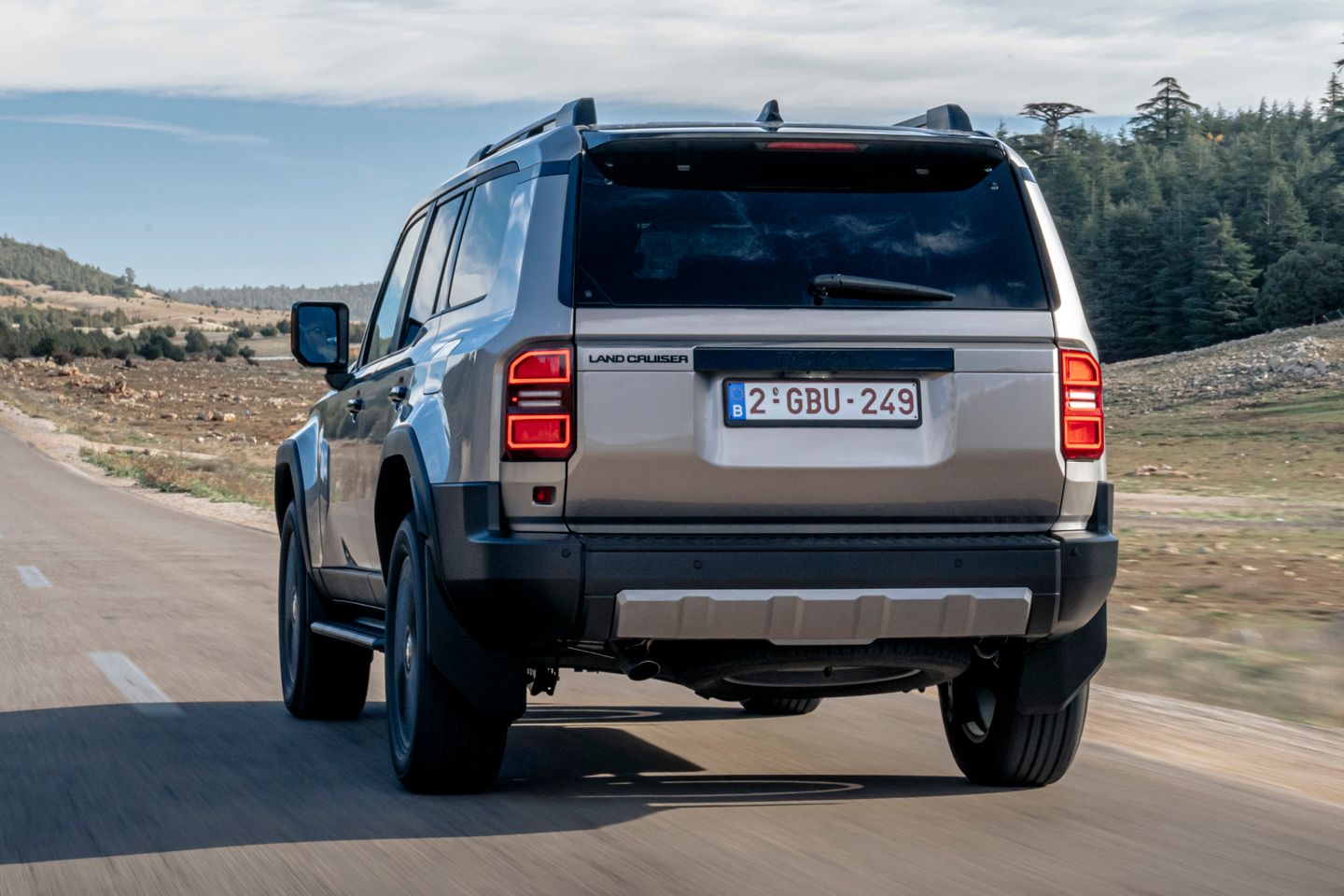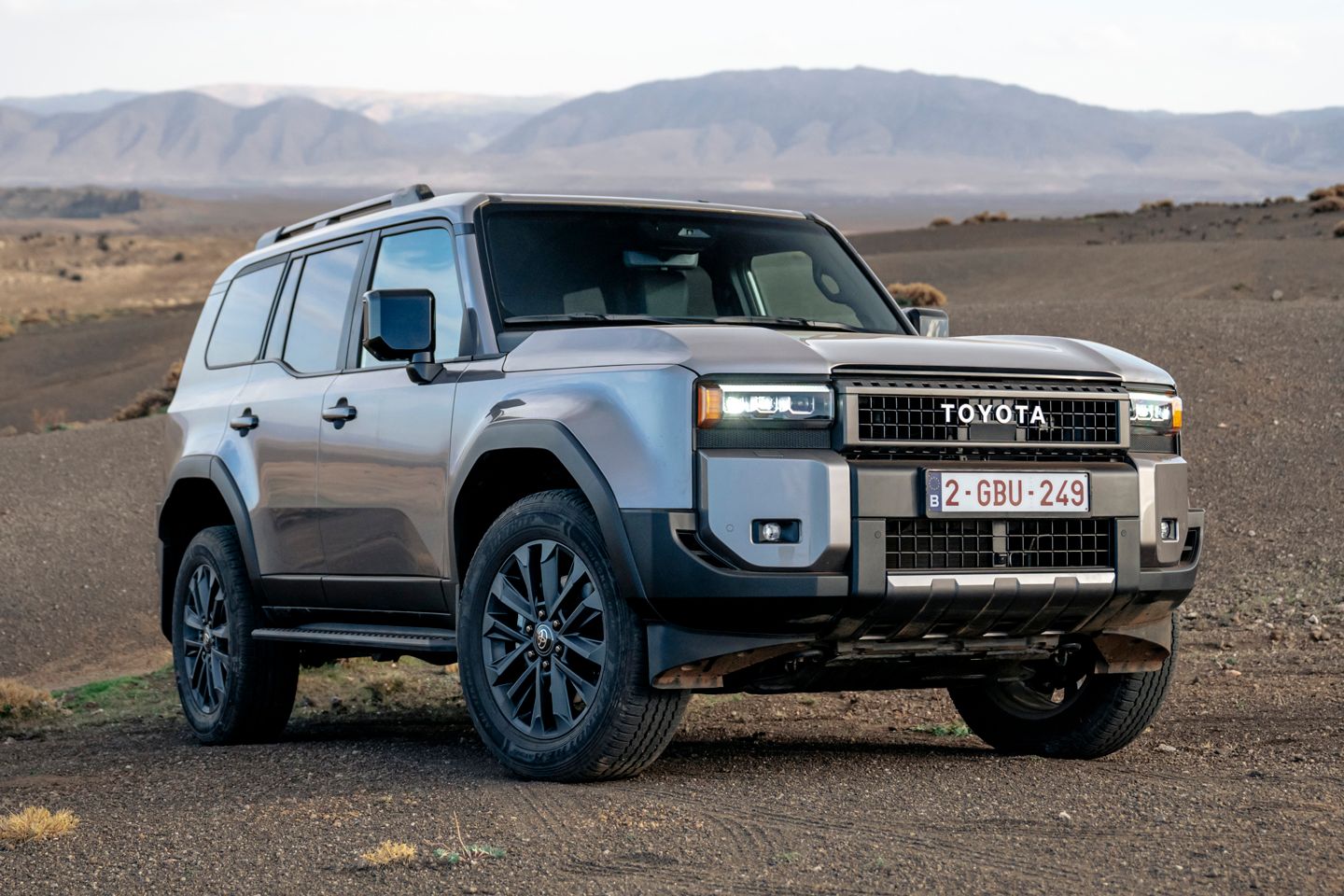
Toyota actually told us a hybrid version of the Land Cruiser was coming when it launched the latest model back in 2023 – the revelation just got lost in all the fuss that surrounded the car’s impressively overhauled styling, which was remarkably on the nose for something that had previously looked about as appealing as a bank of portaloos. The firm suggested that the part-electrified version would be with us by 2025 – and, hey presto – here she is.
If the thought of your teak-tough, go-anywhere SUV containing a lithium-ion battery feels you with dread, then worry not – we’re talking about the kind of mild-hybrid intervention that you won’t give much mind to a day-to-day basis, even when it’s doing its thing. The press release suggests that Toyota is minded to go the whole hog and actually call the resulting car the Land Cruiser Hybrid 48V, but the name change is fairly redundant on the basis that all European models will adopt the system as a matter of course.
As you might expect, that system comprises an electric motor-generator (which replaces the standard alternator), a 48V lithium-ion battery and a DC-DC converter. The appeal of the tech from Toyota’s point of view – much as it is for all manufacturers – is its comparatively modest packaging requirements and low weight; the 13-cell battery weighs just 7.6kg. Not to mention its versatility, although this being Toyota, it reiterates that the two-arm belt tensioner used by the motor is engineered specifically with diesel engines in mind and ‘to meet the demands of rough-road driving’.


Naturally, the diesel engine in question is the mechanically robust 2.8-litre four-pot (for now, the petrol iterations of the Land Cruiser remain off the menu) mated to an eight-speed auto. The car suffers no use case limitations for its hybrid gubbins – these have been mounted high on the engine block to retain the 700mm wade depth, and mirror the system already fitted to the Hilux.
The benefits of 48v hybridisation are familiar by now: Toyota promises swifter and much quieter start-stop functionality for one thing, though it is likely the initial boost in step-off performance that buyers will come to appreciate. The impact of 16hp and 48lb ft of torque might not sound significant in a car that weighs in the order of 2.3 tonnes and already provides 369lb ft from 1,600rpm – but that whiff of electrical assistance at the top of the pedal travel does tend to work wonders for responsiveness without seeming intrusive.
At any rate, even if you don’t notice it, you’ll have the pleasure of knowing exactly what the system is doing based on an operating status read-out which shows CHG (energy regeneration), ECO or PWR (varying levels of assist). Exactly when this will appear on the driver’s display – and the difference (if any) it will make to the Land Cruiser’s starting price – isn’t immediately clear, although Toyota does suggest that the order books for national markets will open shortly ahead of customer deliveries from the end of this year. Much as it did last year, expect demand to outstrip supply.

